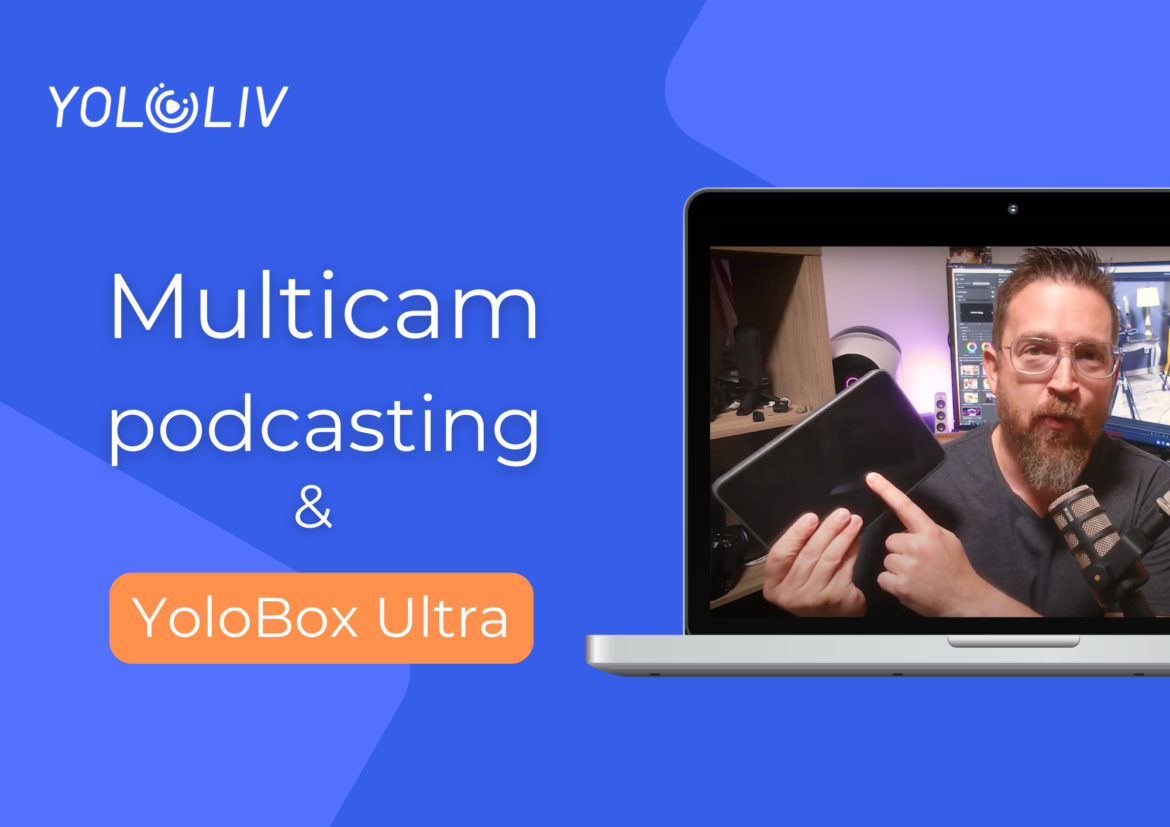Recently, Robert Hamm embarked on a journey to shoot a video podcast for a client using the YoloBox Ultra. This versatile device offers a unique solution for in-studio recording and field switching for video podcasts, without the need for live streaming.
A range of high-quality equipment Robert used
Panasonic AG-CX350 (A Camera) and HC-X2000 (B Camera): These camcorders provide exceptional video quality, recording in 10-bit 420 4K at 24fps and sending an 8-bit 1080p signal to the YoloBox Ultra.
Cayer BV25LH Carbon Fiber Video Tripods with Fluid Heads: These tripods ensure stable and smooth camera movements.
Zhiyun X60 RGBW LED Lights: Used creatively for key and fill lighting, one light is positioned under the table to create a vibrant pink glow, while the other two function as the main lights.
Sennheiser E835 Dynamic Microphones: Two mics provide clear audio, mounted on boom arm stands for optimal positioning.
Additional Accessories: This includes XLR cables, an HDMI to USB-C cable, an iPad Pro, and a boom mount iPad holder.
The Setup and Challenges Robert Encountered
The YoloBox Ultra was our workhorse, managing various scenes and recording them efficiently. Robert used two camcorders: one for a wide shot and another for a hero shot. The iPad was intended for remote guest participation, but it only allowed one audio output at a time. This required us to rely on screen recordings to capture audio for later synchronization.
Use of XY Shot Techniques
One of the creative techniques Robert employed was the XY shot, which involves crossing the camera’s line of sight over the shoulders of the subjects. This setup helps create a more intimate and engaging viewing experience. Also, it makes the audience feel like they are part of the conversation. By positioning the main subject across the other person, he achieved a cozy and informal atmosphere. Obviously, it is perfect for the podcast’s theme.
Audio Setup Insights from Robert
A significant part of his setup was using camcorders for audio input. Camcorders come with professional-grade audio interfaces, eliminating the need for separate audio devices. This streamlined our setup and ensured high-quality audio capture. Moreover, the YoloBox Ultra allowed us to utilize HDMI audio inputs, simplifying the process further.
Incorporating Remote Guests
When including remote guests via Zoom or FaceTime, Robert connects his iPad to the YoloBox Ultra using a USB-C to HDMI cable. He crops the iPad video output in the YoloBox source panel to ensure a polished display.
Summary of experience and lessons
Despite the success, Robert encountered a hiccup with the iPad’s audio recording settings. It led to missing audio from our virtual guest. This was a valuable lesson in ensuring all settings are correctly configured before recording. He also realized the potential of YoloBox’s invite guest feature, which could have mitigated the issue.
Conclusion
YoloBox Ultra proved efficient for Multicam podcasting. It offered flexibility and high-quality output. Thorough preparation ensures a successful recording session.
7,260 total views, 7 views today

Sharon, a member of YoloLiv, has a great interest in the live streaming industry and is learning to write articles related to live streaming.


